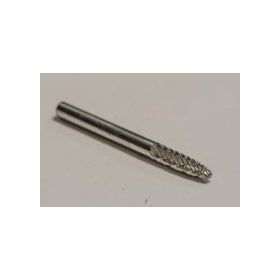Carbide Rotary Burrs, often mentioned as rotary files or die grinder bits, are utilized to cut, shape, grind, and remove sharp edges, burrs, and excess material (deburring). A rotary burr is often a rotating tool that’s utilized for removing material. They’re designed to rotate at high speed, enabling it to control the information it’s performing on. Burrs are suitable for deburring, shaping, and enlarging holes when you use metal. Tungsten carbide rotary burrs in many cases are used on all metals, including steel, stainless steel, and aluminum. They’re commonly utilised by metal fabricators and engineers for tool making, model engineering, jewelry making, welding, deburring, grinding, and sculpting.

Exactly What Is A Carbide Burr?
Generally, a carbide burr is created from either Tungsten Carbide or High Strength Steel (HSS). Tungsten carbide burrs are suitable whenever using metal. Because of their extreme hardness, are going to used on a lot more demanding jobs and does not need replacing, unlike HSS. Also, HSS has less tolerance for warmth and can start to melt under high temperatures. Tungsten carbide burrs go longer and perform better under higher temperatures.
Kinds Of Carbide Burr Shapes
Various Shapes of Carbide Burr and the way To Rely on them
Picking a choice on which shape to use will be based on upon the profile or cut you are looking to understand.
These different shaped burs is certain to get into many a nook and cranny and produce some exciting profiles.
CARBIDE BALL BURRS
These are generally small carbide ball burrs for carving and engraving metal, stone, wood, plastic.
CARBIDE INVERTED CONE BURRS
It can be inverted cone-shaped tungsten carbide burrs for creating v-cuts and rear side chamfering.
CARBIDE TREE BURRS
Carbide pointed tree burr is used for rounding off edges and making concave cuts. Use the pointed end for cutting in difficult to succeed in areas and acutely angled contours.
CARBIDE BURR SPEED
The rotary tool speed you utilize will be based on upon the metal and size/type of burr used. This rotary burrs for metal best for optimum performance and leads to see the manufacturer’s recommendations for the correct RPM to utilize with each and every metal burr. Ideally, you’ll begin at a lesser speed and increase in the process; however, if you realise your burr is chipping, it’s a symbol you are going too slow.
The Process Of Using A Carbide Burr
Which are more straightforward results, and also to form your burr, go longer, confirm you do not use an excessive amount of pressure while cutting. A lot of pressure may cause the flutes’ cutting edges to chip and be smooth prematurely, decreasing the time of your burr.
Ensure that you retain the burr traveling the cutting area the most as you possibly can. In the event the metal burr remains still for too long, this will cause clogging which will help prevent it from digging and jabbing in the work, leaving a tough job with visible marks.
For additional information about tree burs go to the best resource
